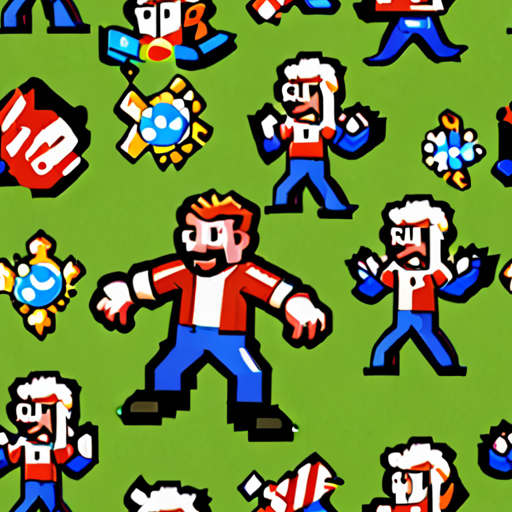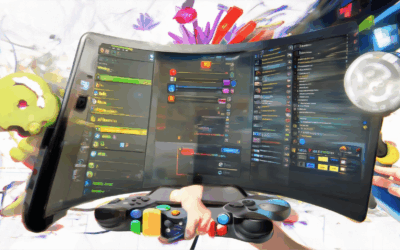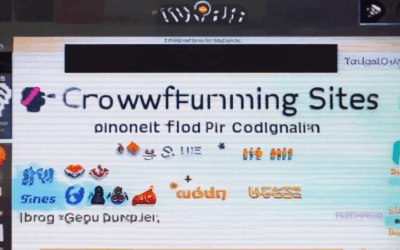In today’s fast-paced gaming industry, developers are constantly seeking ways to optimize their workflow and improve the overall gaming experience. One often-overlooked yet highly effective technique is the use of sprite sheets for games. By combining multiple images into a single file, sprite sheets offer numerous benefits, including reduced file sizes, improved loading times, and enhanced animation capabilities. Whether you’re a seasoned game developer or just starting out, understanding the ins and outs of sprite sheets is essential for creating engaging and efficient games.

Creating a Sprite Sheet for Your Game
To create a sprite sheet for your game, start by setting up a grid in your image editor based on your desired cell size.
- Determine the dimensions of your sprite sheet, taking into account the number of sprites you plan to include and the space required for each one.
- Create a new image in your editor, selecting the desired resolution and color mode.
- Draw a grid onto the image, using the cell size you’ve determined earlier as a guide.
- Draw your sprites onto the grid, leaving space between each one for easy selection and manipulation.
- Save your sprite sheet as a PNG file, making sure to set the transparency correctly.
- Import the sprite sheet into your game engine, such as GameMaker, and convert it to individual frames using the sprite editor.
- Adjust the frame rate and animation settings as needed to achieve the desired visual effect.
Tips and Best Practices
When creating a sprite sheet, keep the following tips in mind:
- Use a consistent cell size to simplify the process of drawing and importing sprites.
- Leave enough space between each sprite to allow for easy selection and manipulation.
- Use a transparent background to make it easier to composite sprites together.
- Experiment with different resolutions and color modes to find the optimal settings for your game.
- Consider using a sprite sheet generator tool to streamline the process and reduce errors.
Common Mistakes to Avoid
Avoid the following common mistakes when creating a sprite sheet:
- Failing to set the correct transparency settings, resulting in a loss of detail or unwanted artifacts.
- Not leaving enough space between sprites, leading to difficulties in selecting and manipulating individual images.
- Using an inconsistent cell size, making it harder to work with the sprite sheet and potentially causing errors during importation.
- Ignoring the importance of color mode and resolution, resulting in poor-quality sprites or compatibility issues.
Why Do Games Use Sprite Sheets?
Sprite sheets are a crucial aspect of game development, allowing developers to efficiently manage and organize game assets. By combining multiple images into a single sheet, sprite sheets reduce the overall file size of a game, making it easier to load and render graphics in real-time. This technique has been widely adopted in the gaming industry due to its numerous benefits, which we’ll explore below.
Reducing File Size
One of the primary advantages of using sprite sheets is the reduction in file size. By packing multiple images into a single sheet, developers can eliminate unnecessary padding between individual sprites, resulting in a smaller overall file size. This reduction in file size leads to faster loading times, improved performance, and reduced memory usage, making sprite sheets an essential tool for game developers.
Improved Asset Management
Sprite sheets also simplify asset management by providing a centralized location for all game-related images. Developers can easily access and manipulate individual sprites within the sheet, streamlining the process of updating or modifying game assets. This streamlined workflow enables developers to focus on creating engaging gameplay experiences rather than managing complex asset libraries.
Enhancing Performance
By reducing the number of individual image files required to render graphics, sprite sheets can significantly improve game performance. With fewer files to load and render, games can run smoother, and developers can take advantage of advanced features like animations, particle effects, and dynamic lighting. This increased performance enables developers to push the boundaries of what’s possible in game development.
Best Practices for Using Sprite Sheets
To get the most out of sprite sheets, developers should follow these best practices:
- Optimize sprite sizes to minimize waste and maximize efficiency.
- Use a consistent naming convention to simplify asset management.
- Organize sprites into logical groups to facilitate easy access and modification.
- Consider using animation software to create seamless transitions between sprites.
- Test and iterate on sprite sheet designs to ensure optimal performance and visual quality.
Conclusion
Sprite sheets have revolutionized the way game developers approach asset management and performance optimization. By leveraging the benefits of sprite sheets, developers can create engaging, high-performance games that captivate audiences worldwide. Whether you’re working on a AAA title or an indie project, incorporating sprite sheets into your development pipeline can make a significant difference in the final product.
Where Can I Get Sprites for My Game?
I’m glad you asked! As an indie game developer, finding high-quality sprites can be a challenge.
- OpenGameArt : A fantastic resource for free and open-source game assets, including sprites. Their collection is vast and well-maintained, making it easy to find what you need.
- Itch.io : A popular platform for indie game developers, Itch.io offers a wide variety of game assets, including sprites. You can browse through user-created content or purchase assets from talented artists.
- Kenney.nl : A renowned game asset creator, Kenney offers a massive library of free and paid sprites, tiles, and other game assets. His work is highly regarded in the gaming community.
- GameDev Market : A marketplace specifically designed for game developers, GameDev Market features a curated selection of high-quality game assets, including sprites. You can browse through various categories or search for specific assets.
- Pixelfoundry : A community-driven platform for game developers, Pixelfoundry offers a wide range of free and paid game assets, including sprites. You can contribute your own assets or download those created by others.
- Game Assets Hub : A comprehensive directory of game assets, including sprites, Game Assets Hub makes it easy to discover new resources and connect with other developers.
When searching for sprites, remember to check the licensing terms and conditions for each asset. Some may require attribution, while others might have specific usage restrictions.
By exploring these resources, you’ll find a wealth of high-quality sprites to enhance your game. Happy developing!

Are Sprite Sheets Still Used?
Sprite sheets have been a staple in video game development for decades, allowing artists to efficiently manage and animate large numbers of sprites.
- In recent years, sprite sheets have seen a resurgence in popularity due to advancements in technology and changes in game development trends.
- Many modern games continue to utilize sprite sheets for various purposes, including character animations, environmental details, and UI elements.
Indie Game Development and Sprite Sheets
As an indie game developer, understanding the role of sprite sheets in game development can greatly impact the success of your project.
- Spritesheets are particularly useful for indie game developers who need to create visually appealing games with limited resources.
- By utilizing sprite sheets, indie devs can streamline their workflow, reduce asset management complexity, and focus on core gameplay mechanics.
Competitors and Alternatives
While sprite sheets remain a popular choice, other alternatives have emerged to cater to different needs and preferences.
- Texture atlases offer a more efficient way to store and manage large textures, reducing memory usage and improving performance.
- Particle systems and dynamic graphics can also replace traditional sprite-based animations, providing more flexibility and realism.
Best Practices for Using Sprite Sheets
To get the most out of sprite sheets, consider the following best practices:
- Optimize sprite sheet sizes to minimize memory usage and improve loading times.
- Use sprite sheet compression algorithms to reduce file size and improve performance.
- Implement sprite sheet caching mechanisms to reduce reload times and improve overall game performance.
Conclusion
Sprite sheets continue to play a vital role in video game development, offering numerous benefits for indie game developers and larger studios alike.
By understanding the advantages and limitations of sprite sheets, developers can make informed decisions about their game’s art style and technical implementation.
Benefits of Using Sprite Sheets
Sprite sheets offer numerous advantages for game developers, making them an essential tool in the game development process. By understanding these benefits, you can optimize your game’s performance, reduce development time, and create a seamless gaming experience for players.
-
Faster Loading Times
Reducing the number of image files needed to load can significantly decrease loading times, resulting in a smoother gaming experience.
-
Improved Performance
Spritesheets minimize the number of HTTP requests required to load images, reducing latency and improving overall game performance.
-
Memory Efficiency
Using spritesheets reduces the amount of memory required to store and access individual images, allowing for more efficient use of system resources.
-
Easier Asset Management
Spritesheets simplify asset management by consolidating multiple images into a single file, making it easier to organize and update game assets.
-
Increased Flexibility
Spritesheets enable developers to easily switch between different game states, animations, and graphics, increasing flexibility and reducing development time.
-
Enhanced Graphics Quality
With spritesheets, developers can create high-quality graphics without compromising performance, resulting in a visually stunning gaming experience.
When implemented correctly, spritesheets can have a significant impact on game development, enabling developers to create engaging, high-performance games that meet player expectations. By leveraging the benefits of spritesheets, you can take your game development to the next level and deliver exceptional gaming experiences to your audience.
Why is it Called Sprite?
The name “Sprite” has its roots in the world of fantasy and mythology.
- Sprites are mythical creatures often depicted as small, mischievous beings that inhabit forests, mountains, and other natural environments.
- In folklore, sprites are known for their magical powers and ability to interact with humans in various ways.
When it comes to the popular lemon-lime soft drink, the name “Sprite” was chosen because of its refreshing and revitalizing qualities, much like the mythical creature.
- The drink’s bright green color and lively personality were inspired by the whimsical nature of sprites.
- The name “Sprite” was meant to evoke feelings of fun, energy, and playfulness, making it a perfect fit for a beverage that’s often associated with summertime and outdoor activities.
Today, the name “Sprite” is synonymous with a refreshing drink that’s enjoyed by people around the world.
Conclusion:
The name “Sprite” may seem simple, but it holds a rich history and cultural significance that reflects the values and characteristics of the mythical creature it’s named after.




0 Comments